Results 8,261 to 8,270 of 12096
Thread: Anandtech News
-
06-08-18, 12:05 PM #8261
Anandtech: RGB LEDs Everywhere: HyperX Teases Fury SSD with Lights
Kingston's HyperX teased a new Fury-branded RGB LED SSD at Computex. The company didn’t have set specifications for the new 2.5” SATA 6GB/s SSD (HyperX is still fine-tuning the product, according to the company rep), so we don't know much at the moment.
However, the drive itself features standard SATA connectors (power and data) and an additional port that connects to the motherboard for RGB LED control. The micro-USB connection allows the SSD to use vendor-specific RGB LED software for control and allows the SSD to be daisy chained to multiple RGB devices. The company didn’t specify which motherboards would support the new RGB LED SSD.
The only viable specification HyperX provided were the sequential read and write speeds, rated at up to 500MB/s and 480MB/s, respectively (lower than what was mentioned during CES this year). This is well below the performance of the company's Savage-branded SSD, which is rated for 560MB/s and 530MB/s sequential read and write speeds using a Phison S10 controller with TLC NAND. With slower rated speeds, the new Fury RGB LED SSD may be less about performance and more about the bling, but the MSRP will undoubtedly determine the flashy storage's future.
Full specifications and pricing for the new HyperX RGB LED SSD are currently unavailable, but if you're itching to add yet another piece to your PC that lights up (we’ve nearly seen it all – RGB LED PSU cables anyone?), the company said that it expects to start shipping this flashy flash storage drive in Q3 of 2018.
Want to keep up to date with all of our Computex 2018 Coverage? 
Laptops
Hardware
ChipsFollow AnandTech's breaking news here!
Derek Forrest contributed to this article.
More...
-
06-08-18, 06:09 PM #8262
Anandtech: Intelís Core i7-8086K CPU Now on Sale
While Intel’s other 5GHz processor has turned out to be greatly exaggerated, Intel’s original 5GHz chip, the Coffee Lake-based Core i7-8086K, is very much real. And right on schedule, Intel has rolled it out to retail.
As unexpectedly published in the Intel 8086K giveaway terms & conditions, the retail price on the chip is indeed $425. This makes for what’s essentially a $75 premium over Intel’s once and future king, the Core i7-8700K. As a reminder only 50,000 units of the 8086K are being released – minus 8,086 for the giveaway – so while this is technically Intel’s fastest 6-core CPU, it isn’t going to be a permanent fixture like the 8700K.
While we’re still waiting to get the individual per-core turbo levels of Intel’s special edition chip, officially its base clock and single-core turbo clock are both 300MHz higher than the 8700K, or about 6-8% faster than its non-special counterpart. And we expect the other turbo levels to be similar. Ostensibly the TDP remains at 95W, however as Intel defines this as power consumption under load at the base clock, power consumption with turbo – particularly multi-core enhancement, which I know you’re all going to run anyhow – will definitely be higher.Intel 8th Generation 'Coffee Lake' Core i7 Desktop Processors i7-8086K i7-8700K i7-8700 i7-8700T Cores 6C / 12T Base Frequency 4.0 GHz 3.7 GHz 3.2 GHz 2.4 GHz Turbo Boost 2.0
(Single Core)5.0 GHz 4.7 GHz 4.6 GHz 4.0 GHz L3 Cache 12 MB DRAM Support DDR4-2666 Integrated Graphics GT2: 24 EUs IGP Turbo 1.20 GHz PCIe Lanes (CPU) 16 TDP 95 W 95 W 65 W 35 W Price (tray) $425? $359 $303 $303
The CPU is available from Amazon, Newegg, and a few other retailers while supplies last.
Buy Intel Core i7-8086K on Amazon.com
More...
-
06-08-18, 08:47 PM #8263
Anandtech: NVIDIA Publishes Official G-Sync HDR System Requirements, Releases VBIOS U
As the first week of June winds down, the long-awaited and even longer delayed G-Sync HDR monitors are just about here. For Acer's Predator X27, units are starting to finally make their way into the hands of consumers, while ASUS' ROG Swift PG27UQ is slated for late this month.
In preparation for these new displays, towards the end of this week NVIDIA quietly published official G-Sync HDR System Requirements, which links to the newly-released Graphics Firmware Update Tool for DisplayPort 1.3 and 1.4 Displays. The latter applies to a range of Maxwell and desktop Pascal products, but more importantly is there to provide G-Sync HDR capability for older Pascal cards that shipped without an HDR-supporting VBIOS.
The G-Sync HDR system requirements themselves are described rather minimally:
- Windows 10
- NVIDIA GeForce GTX 1050 or higher (desktop GPUs may need firmware upgrade)
- R396 GA2 driver or higher (presumably 397.64 and higher)
- DisplayPort 1.4 driven directly by the GPU
None of these prerequisites are particularly surprising, but it does formally confirm the requirements that so far only manufacturers have detailed. A Windows 10 version was not specified, but presumably refers to the latest April 2018 Update, while the "GTX 1050" presumably includes the new GTX 1050 3GB with 96-bit memory bus.
As for the VBIOS update tool (32-bit and 64-bit), it will detect whether a VBIOS update is needed or not before prompting the user to flash to the latest firmware. Beyond compatibility with G-Sync HDR, the new VBIOS will resolve hanging on boot or blank screening until the OS loads, on systems connected to DP 1.3 or 1.4 monitors. The release notes also mention supporting the latest DP1.3 and 1.4 features, though specifics were not provided. To be clear, it is not intended for user customized VBIOS, and as far as Pascal goes the tool appears geared towards early Founders Edition models.
Off the back of their 398.11 WHQL driver optimizations for HDR G-Sync, NVIDIA has also released a 398.18 hotfix, resolving black screening when booting to Windows after installing 397.93. And the support instructions for sending logs of display issues (DispDiag) has also been updated.
Related Reading- ASUS’ ROG Swift PG27UQ G-Sync HDR Display Due in Late June For $1999
- Acer’s Predator X27 G-Sync HDR Display Listed in the USA, to Ship on June 1
- NVIDIA Updates on G-Sync HDR: 4Kp144 Monitors On Sale at End of May, Other Models Coming Later This Year
- Acer and ASUS G-Sync HDR Displays Listed & Priced In Europe
- NVIDIA Expects 4K 144 Hz G-Sync HDR Displays to Launch in April
- Acer and ASUS Delay Their 4K 144 Hz G-Sync HDR Displays to 2018
- ASUS Demonstrates ROG Swift PG27UQ: 4K, 144 Hz, HDR, DCI-P3 and G-Sync
- Acer Announces Predator X27 Monitor: 4K@144 Hz with DCI-P3, HDR10, & G-Sync
More...
-
06-09-18, 08:32 AM #8264
Anandtech: We Found a Prototype 4 TB Intel QLC SSD with 500 P/E Cycles
The storage industry is getting exciting again. In order to increase capacity of NAND SSDs and lower costs, there are two different routes being taken: either increase the number of bits per cell from 3bpc (TLC) to 4bpc (QLC) for a 33% increase, or increase the number of TLC layers per chip from 64 layers to 96 layers for a 50% increase. Each method has benefits and issues, however we have been waiting for the two technologies to actually be found on upcoming drives (rather than just on a press release). As part of the show we found a 4 TB SATA-based drive using a Maxio Technology controller and Intel's latest QLC NAND flash, as well as a drive each from Maxio and SMI using Micron's latest 96-layer TLC memory. We also scored some data on the speeds, as well as the state of play of each of the technologies, including the current P/E cycles of the QLC.
More...
-
06-11-18, 10:25 AM #8265
Anandtech: PowerColor Shows Off Tiny Thunderbolt 3 External GPU Boxes Money Canít Buy
While the Thunderbolt 3 eGFX intiative has been primarily focused on high-end desktop-class video cards – the so-called eGFX Chassis – Intel's eyes have been on a bigger picture that would include smaller eGFX docks. However for obvious reasons these have been few and far between, as manufacturers have catered first and foremost to high-end buyers. However these smaller docks do exist, and we ran into a couple on the Computex showfloor. Apparently, PowerColor has two of such products, but there is a catch.
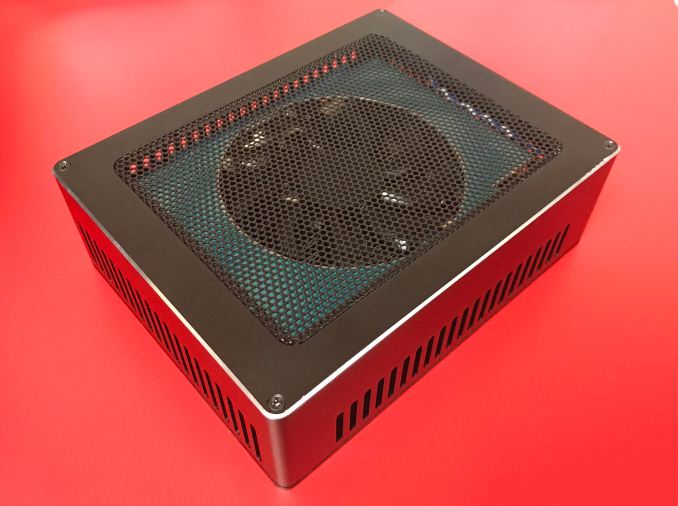
At the show, PowerColor was demonstrating two rather compact eGFX designs: the TBX-180/240FU and the TCX-DA. The former comes with a 180 W or 240 W power supply, can house up to GeForce GTX 1070/Radeon RX 570 graphics cards, and has a dual-port USB 3.0 hub. The latter is a rather special product that supports MXM modules and has a 220 – 240 W external PSU. The unit is outfitted with three DisplayPorts, an HDMI output, and a dual-port USB 3.0 hub.
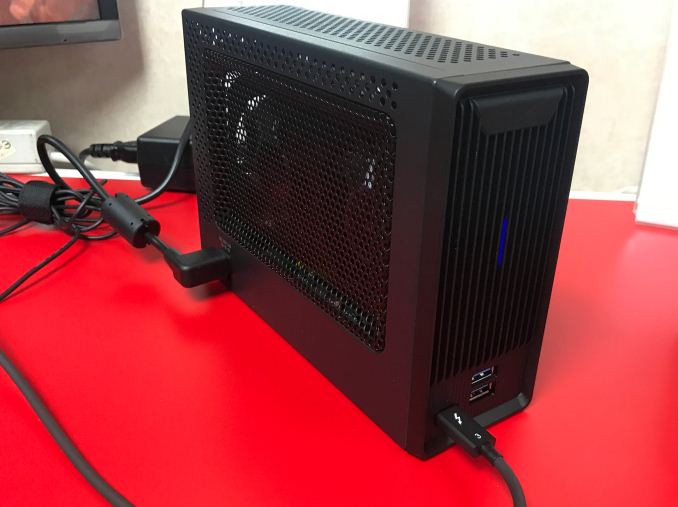
Both eGFX enclosures look very neat and clean. But at present they are only available to PowerColor’s OEM customers, whom then resell them under their own brands or just ship them with their PCs.
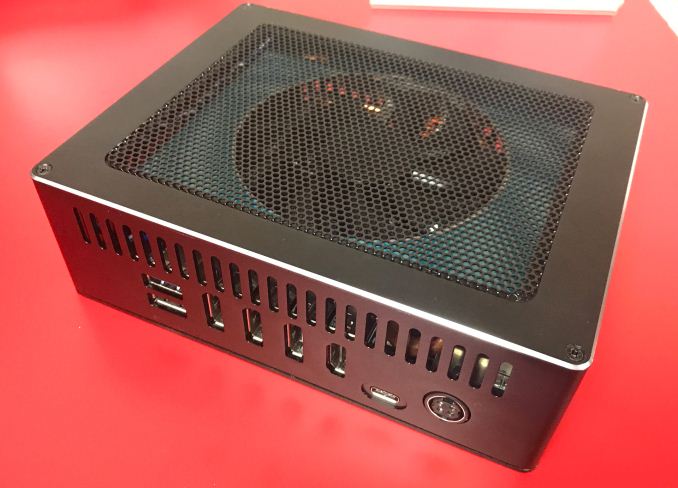
As noted, nowadays there are only a few compact eGFX boxes from well-known manufacturers available on the market: the AKiTiO Node, and GIGABYTE’s Gaming Boxes. By contrast, all the other solutions are rather bulky. While it is understandable that PowerColor is not inclined to offer the TCX-DA to end-users because MXM modules are not available widely, it is completely unclear why the company does not offer the TBX-180/240FU on the open market.
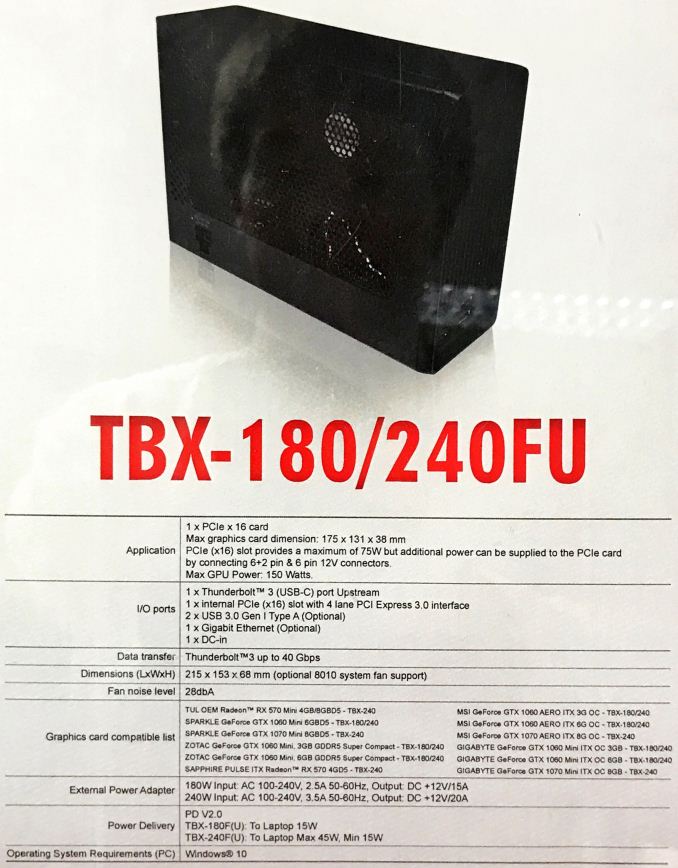
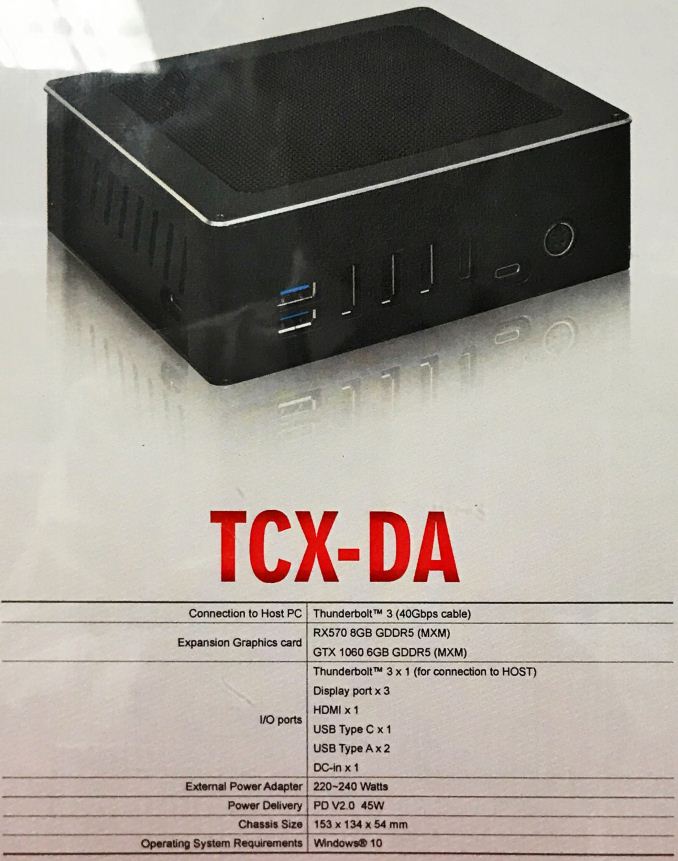
Want to keep up to date with all of our Computex 2018 Coverage? 
Laptops
Hardware
ChipsFollow AnandTech's breaking news here!
More...
-
06-11-18, 10:25 AM #8266
Anandtech: Intel Core i7-8086K Review First Numbers
Intel announced it, we asked for one, we were told no press samples, so we bought one. This is Intel's 40th anniversary of the original x86 microarchitecture with the 8086 processor, and to celebrate they released the Core i7-8086K, based on Coffee Lake with a turbo up to 5.0 GHz. With only 50,000 parts to be sold worldwide, 8086 of which are given away for free in regional sweepstakes, Intel is being bold in trying to limit supply and actively promote its new mainstream headline act. As with most processors, it is all in the binning, and this is truly Intel’s highest performance mainstream processor ever. However buying one of these CPUs for performance might leave a bad taste in your mouth.
More...
-
06-11-18, 12:49 PM #8267
Anandtech: GIGABYTE Expands Aorus Range to PSUs with AP750GM and AP850GM
After launching their high-end gaming-focused Aorus sub-brand a couple of years ago, GIGABYTE has continued to invest in the brands over the years with new products and branching into new product categories entirely. Now at Computex, GIGABYTE has announced that it's expanding the Aorus range into power supplies, introducing it's first Aorus-branded PSUs.
The Aourus AP750GM and the Aorus AP850GM power supplies were developed by GIGABYTE (like virtually all PSUs from this company), they feature one 12 Volts rail, two 135-mm fans, and feature modular design. The PSUs use Japanese capacitors and are outfitted with all possible safety mechanisms, including protections against overpower, overvoltage, undervoltage, short circuit, power surge, and overcurrent. The two power supplies carry the 80Plus Gold badge (up to 90% efficiency at 50% load) and are speced for 750 W as well as 850 W maximum output, which is in line with demands of mainstream gaming PCs.
GIGABYTE did not disclose when it plans to start selling its Aorus PSUs, but considering the fact that 750 W and 850 W PSUs 80 Plus Gold are relatively easy to make, expect the power supplies to hit the market shortly.
Want to keep up to date with all of our Computex 2018 Coverage? 
Laptops
Hardware
ChipsFollow AnandTech's breaking news here!
More...
-
06-11-18, 12:49 PM #8268
Anandtech: Micronís 96-Layer 3D TLC NAND Demonstrated, Qualified by Maxio, SMI
Micron yet has to formally introduce its 3rd generation 96-layer 3D TLC NAND flash. But as we've spotted on the Computex showfloor, SSDs based on the new type of memory are already being demonstrated by two developers of SSD controllers — Maxio Technology and Silicon Motion.
Intensified competition on the storage market is calling for NAND flash makers to rapidly increase bit density of their chips in a bid to enable makers of actual SSDs or smartphones to boost capacity of their products without considerable cost increases. In the coming quarters all leading producers of memory will be rolling out their 3D NAND devices using 96-layer 3D TLC, 64-layer 3D QLC, and 96-layer 3D QLC architectures. Back in May, Western Digital confirmed that some of its customers had already started to use the company’s 96-layer 3D TLC NAND for retail products (USB flash cards, memory cards, etc.). As it turns out, Micron’s 96-layer 3D TLC memory has already been qualified by at least two developers of SSD controllers.
At Computex, Maxio Technology was demonstrating a prototype of a 256 GB SATA SSD running its MAS0902A-B2C DRAM-less controller and Micron’s 3D TLC B27A memory. The drive hits practical performance limits of a SATA 6 Gbps interface, and thus enables SSD makers to build rather speedy mainstream products using the new memory (which is going to be cheaper in terms of per-bit cost than previous-gen 64-layer 3D NAND).
The new 96-layer 3D TLC NAND memory from Micron has been qualified for SSDs by Maxio, though it is unclear whether firmware for the new type of memory is production ready. Anyhow, as soon as Micron starts sales of these chips, there will be at least one SATA SSD controller that will support it.
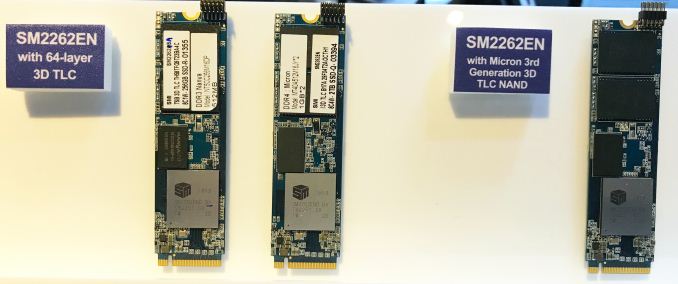
Silicon Motion is also playing with Micron’s 96-layer 3D TLC NAND, but on a different side of the spectrum. The company is demonstrating a prototype of an M.2 SSD based on Micron's 96-layer 3D TLC memory as well as its top-of-the-range SM2262EN controller and thus aimed at high-end PCs. The controller itself is in its final stages of development: the final BA revision of the chip was produced in early May and now its firmware is being tuned. With the SM2262EN we are looking at up to 3.5 GB/s sequential read speed as well as up to 3 GB/s sequential write speed.
Silicon motion expects SSDs featuring the SM2262EN and various kinds of 3D TLC NAND to hit the market in August or September. It is hard to say whether Micron’s 96-layer 3D TLC will be used for the first wave of SM2262EN-powered drives, but SMI has qualified this memory type for SSDs and therefore its partners will have this memory option.
Want to keep up to date with all of our Computex 2018 Coverage? 
Laptops
Hardware
ChipsFollow AnandTech's breaking news here!
More...
-
06-11-18, 01:25 PM #8269
Anandtech: G.Skillís DRAM Extremes: DDR4-4000 on AMD Ryzen, DDR4-5066 on Intel Core i
In the constant race to one-up the other memory vendors in the highly commoditized DRAM market, at Computex last week G.Skill demonstrated its Trident Z RGB memory modules running at rather unprecedented data transfer rates. While operating DDR4 at 5000 MT/s in dual-channel mode is not considered a breakthrough these days, running memory at 4000 MT/s on an AMD Ryzen system is something rather unique.
One of the peculiarities that AMD’s first-gen Ryzen platform has is a memory sub-system that cannot handle data rates significantly higher than 3200 ~ 3466 MT/s. With the second-gen Ryzen platform AMD partially fixed the problem by altering the caching sub-system and upgrading firmware, yet without actually changing the memory controller. Therefore, running memory at high frequencies is still a challenge with the Ryzen 2000-series.
Nonetheless, as the things are getting better, companies like G.Skill can push DDR4 modules all the way to 4000 MT/s with CL18 22-22-42 timings on a Ryzen 7 2700X CPU, as well as with CL20 22-22-44 on a Ryzen 5 2600 processor. Obviously, DDR4 memory modules have to use 1.35 V at high speeds, but G.Skill has not specified voltage for the memory kits in question.
Without any doubts, it has taken G.Skill quite some time to figure out precise sub-timings for a DDR4-4000 operation on a Ryzen 2000-series/X470 platform. Moreover, the company is only demonstrating two dual-channel 16 GB kits, so some luck with the modules and the processors may be involved. Meanwhile, it is also worth mentioning that G.Skill supplies memory for AMD’s Ryzen review kits sent to journalists and other partners of AMD, so it gets to spend more time tweaking SPD settings for AMD Ryzen systems than any other supplier of memory modules.
Intel’s memory controllers and memory sub-systems on the latest platforms have their perks, but G.Skill has a lot of experience with Intel’s CPUs in general. Therefore, it was not surprising to see that the company could hit DDR4-5066 with its latest Trident Z RGB memory modules albeit with very loose CL21 26-26-54 timings at a high voltage.
Obviously, Computex demonstrations do not necessarily indicate imminent product launches. Nonetheless, if G.Skill can hit certain data transfer rates with hand-picked DIMMs, it learns what is needed to replicate the same settings in mass products. The only question is when such products become available and at how high their prices are going to be.
Buy G.Skill Trident Z RGB 16GB (2 x 8GB) DDR4-3200 on Amazon.com
Want to keep up to date with all of our Computex 2018 Coverage? 
Laptops
Hardware
ChipsFollow AnandTech's breaking news here!
More...
-
06-11-18, 02:17 PM #8270
Anandtech: Afox and Qdion Have 3kW PSUs for Cyrptocurrency Miners
With GPU cryptocurrency mining apparently here to stay, over the last couple of years hardware vendors have begun developing mining-optmized (or at least branded) gear for miners. This of course extends to power supplies, as a stable and high-quality power supply is one of the key requirements for a high-uptime mining operation. This has resulted in a focus on high-wattage PSUs, particularly those with numerous PCIe power connectors for accelerators. To that end, a number of manufacturers have already been offering 1 – 2 kW PSUs for mining for some time now, however Afox and Qdion have decided to up the ante even more and introduce 3 and 3.3 kW power supplies this year.
Afox was originally established by Foxconn in 2008 to sell AMD Radeon graphics cards, but the brand has never become really popular outside of certain regions. Over the years, it added numerous product categories, including PSUs, SSDs, miniature PCs and even tablets. Since many GPU buyers nowadays use them for mining, it is not surprising that the company introduced its 3.3 kW PSU designed specifically for this kind of activity.
Foregoing any intent to adhere to PC case specifications, the Afox 3300 W PSU (AFMPS-3300A1) looks like (and likely is very similar to) two power supplies in one enclosure, with a total size to match. Obviously, miners do not use cases, so for them such inflexibility does not really matter. What matters is that the PSU can feed 12 graphics cards with its massive +12V/270A output and can support almost any GPU that is on the market today. In addition, the power supply has nine SATA connectors and even a Molex connector for a just-in-case scenario, but evidently SATA cables are hardly ever used by the target audience of the 3.3 kW beast. Meanwhile, the AFMPS-3300A1 has an 8-pin EPS connector, so hardcore overclockers with HEDT motherboards that require one of these could use the 3300 W PSU too for their liquid nitrogen or liquid helium experiments.
It is noteworthy that the AFMPS-3300A1 is so not aimed at consumers that Afox didn't even bother to get an 80 Plus rating on it, so we can only wonder how efficient this product is.
Qdion is another supplier that has a ~3 kW massive PSU that looks like two power supplies glued together in one box. Qdion is a subsidiary of FSP that offers entry-level products on select markets, but it looks like the manufacturer decided to use the trademark for a specialized product too.
Just like the 3.3 kW PSU from Afox, Qdion’s QD3050 90% ATX power supply comes with a massive number of PCIe power connectors to feed a dozen of GPUs with its +12V/248A output. The unit also has numerous SATA power plugs, but no EPS, so this one will not appeal to hardcore overclockers. One funny thing to note about this power supply is that it has a 90 Plus badge on it, which officially does not exist. In the meantime, a number of manufacturers from China are using it these days.
Overall the cryptocurrency mining industry appears to be developing quite rapidly with specially-designed graphics cards, motherboards and now PSUs available to interested parties via specialized channels. In fact, you can even get mining graphics cards from retail outlets in Taiwan, something that is not supposed to happen. That said, both the Afox AFMPS-3300A1 and the Qdion QD3050 are available from certain channels specializing on equipment for miners, but will hardly be sold by regular retailers.
As for pricing, Afox says that its 3.3 kW PSU costs around $250 per unit when bought in sufficient quantities, so one can surmise that components used for the part are not really high-end. Again, this hardly matters to miners that run large farms and are used to quickly swapping out hardware.
Want to keep up to date with all of our Computex 2018 Coverage? 
Laptops
Hardware
ChipsFollow AnandTech's breaking news here!
More...
Thread Information
Users Browsing this Thread
There are currently 11 users browsing this thread. (0 members and 11 guests)




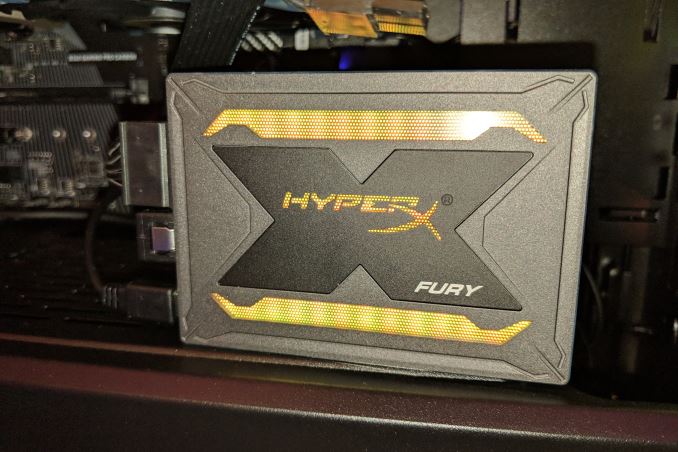

 Quote
Quote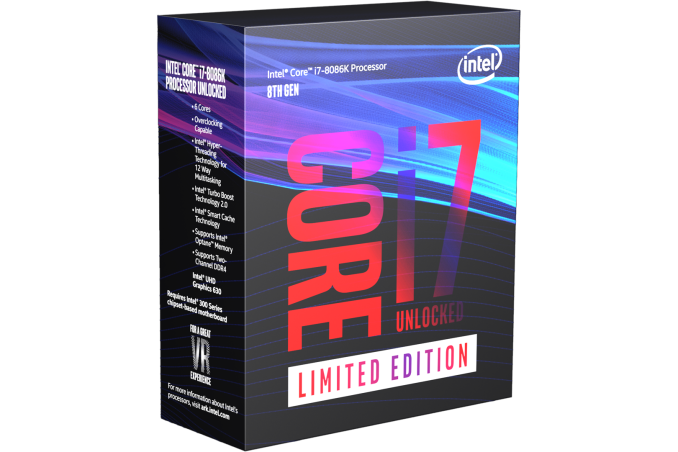
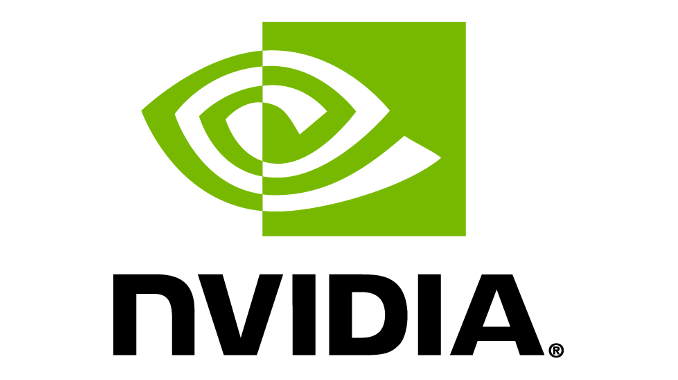

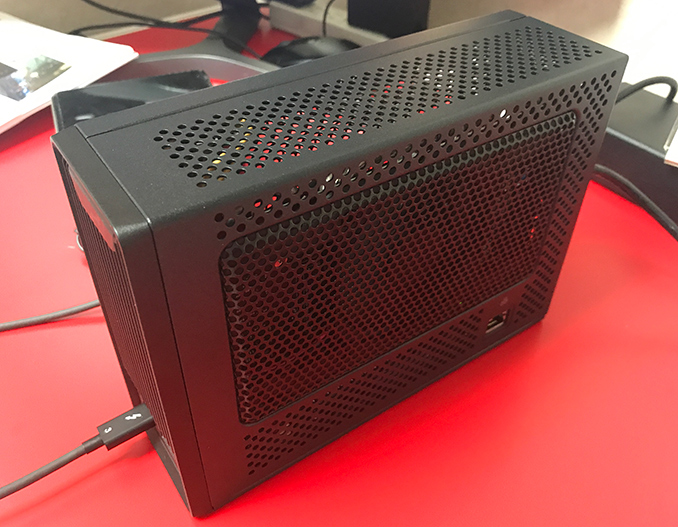

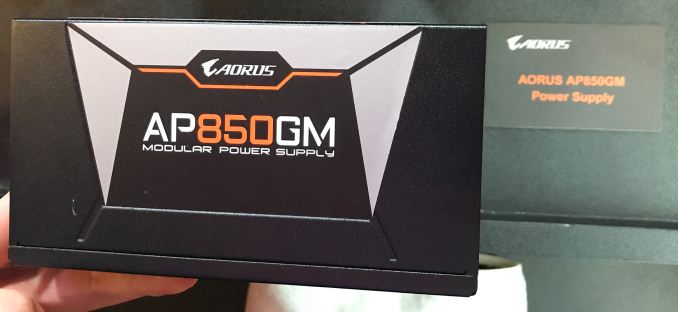
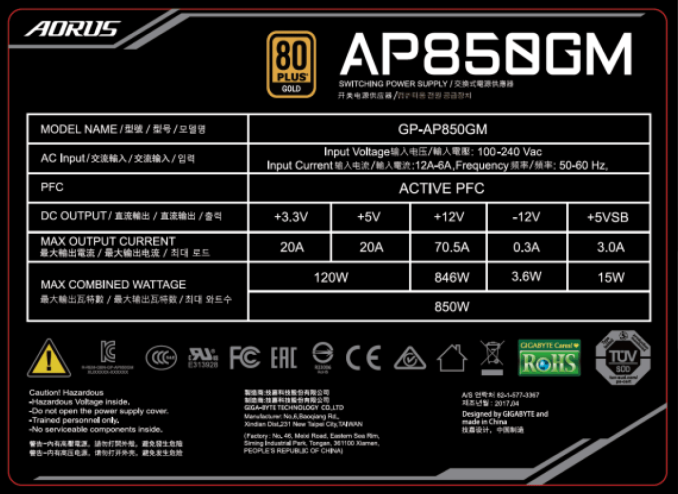
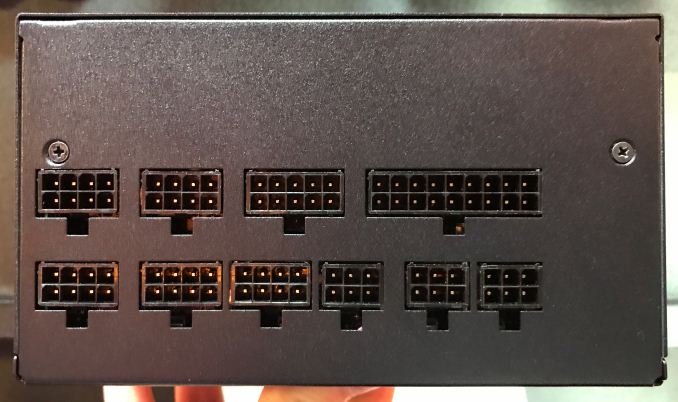
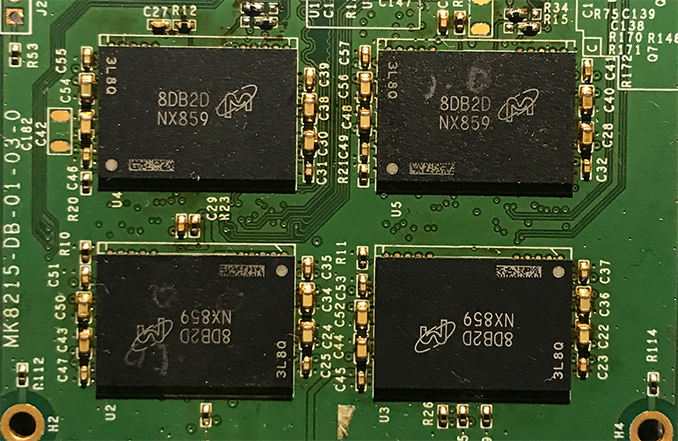

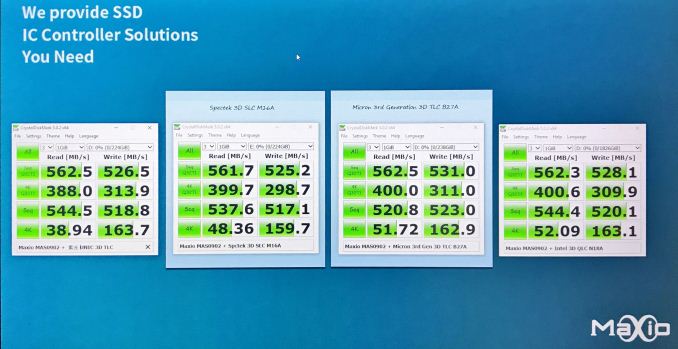

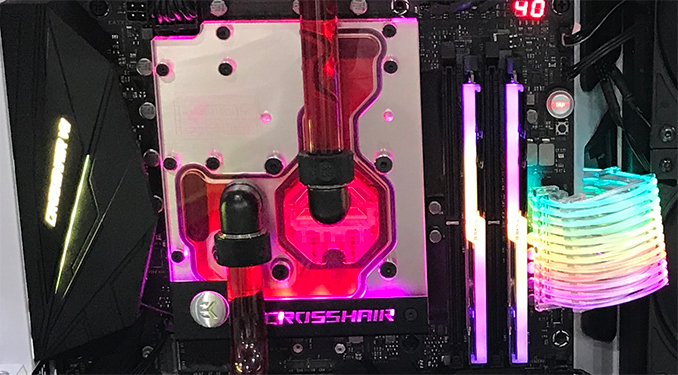
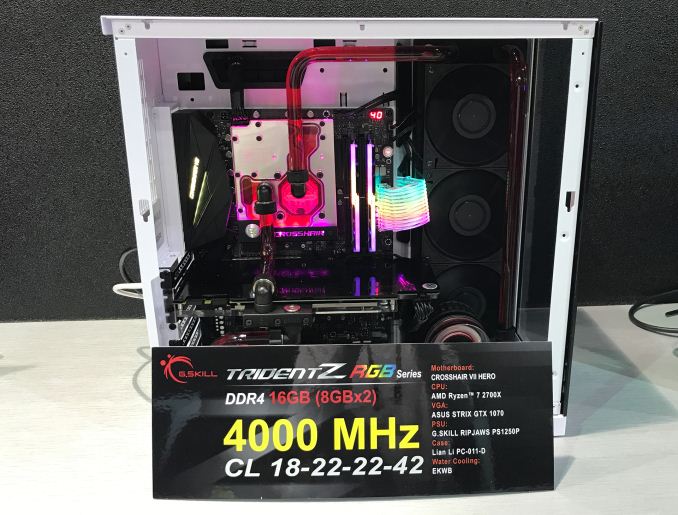

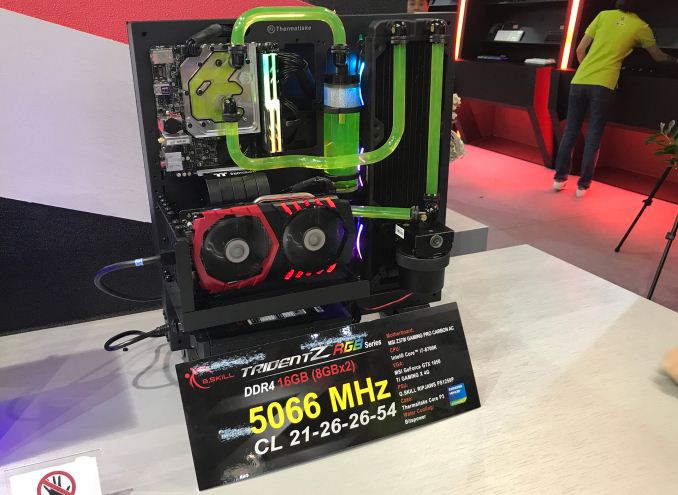
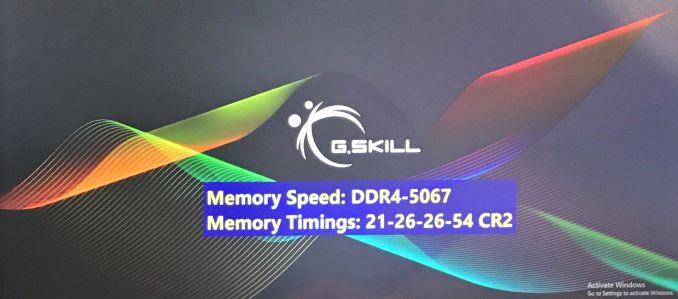
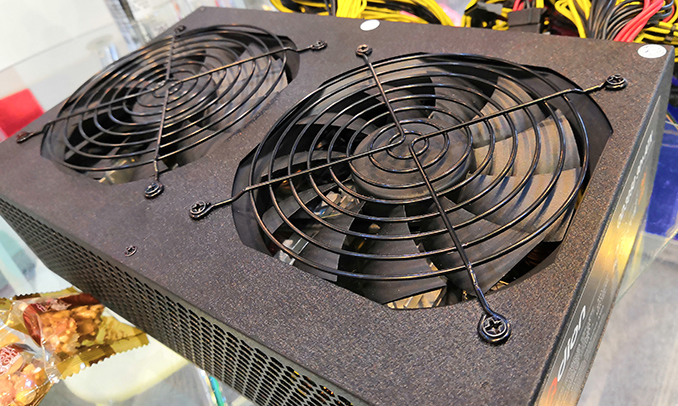
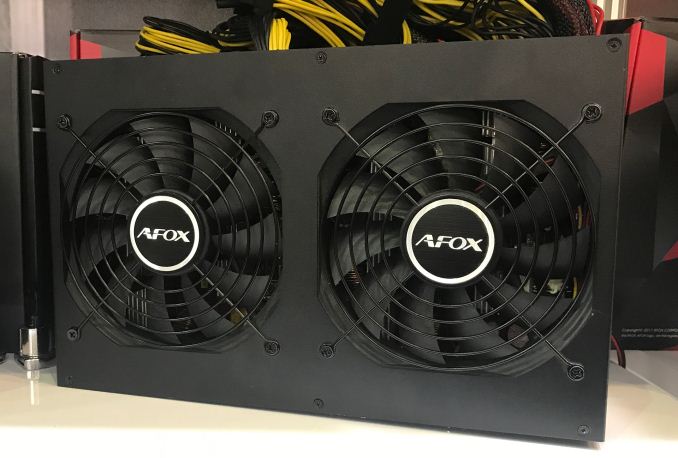
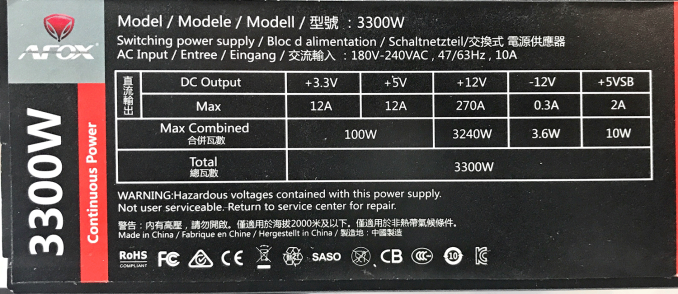
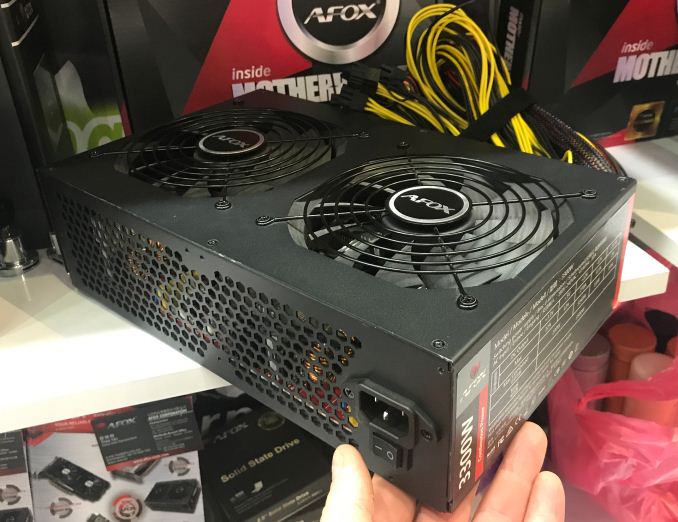
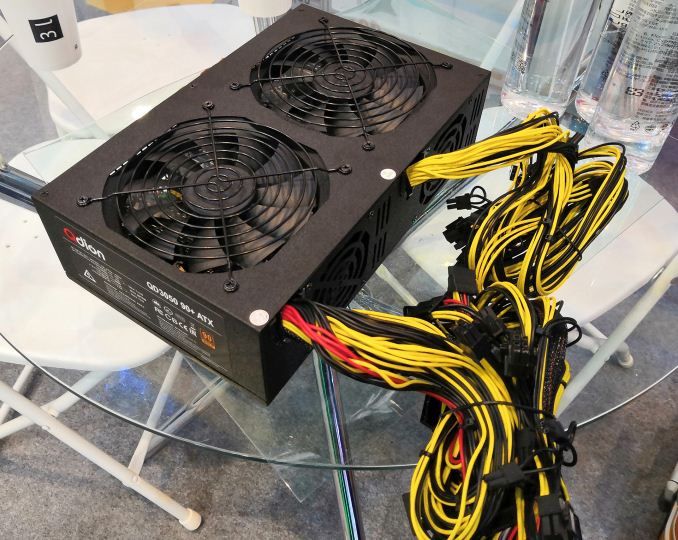
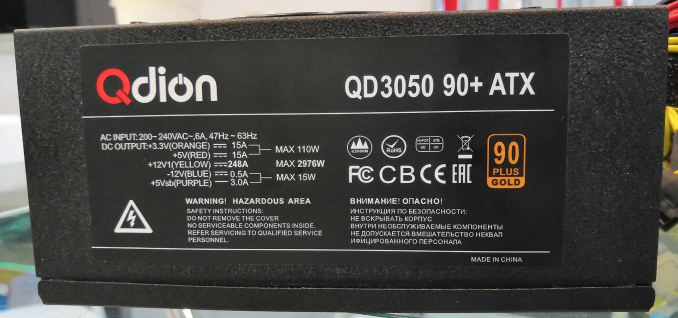
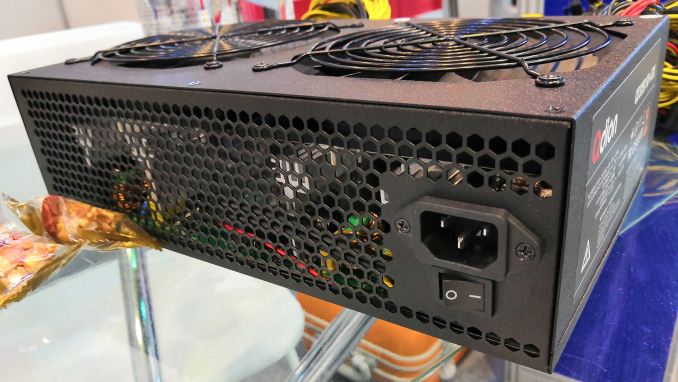
















Bookmarks